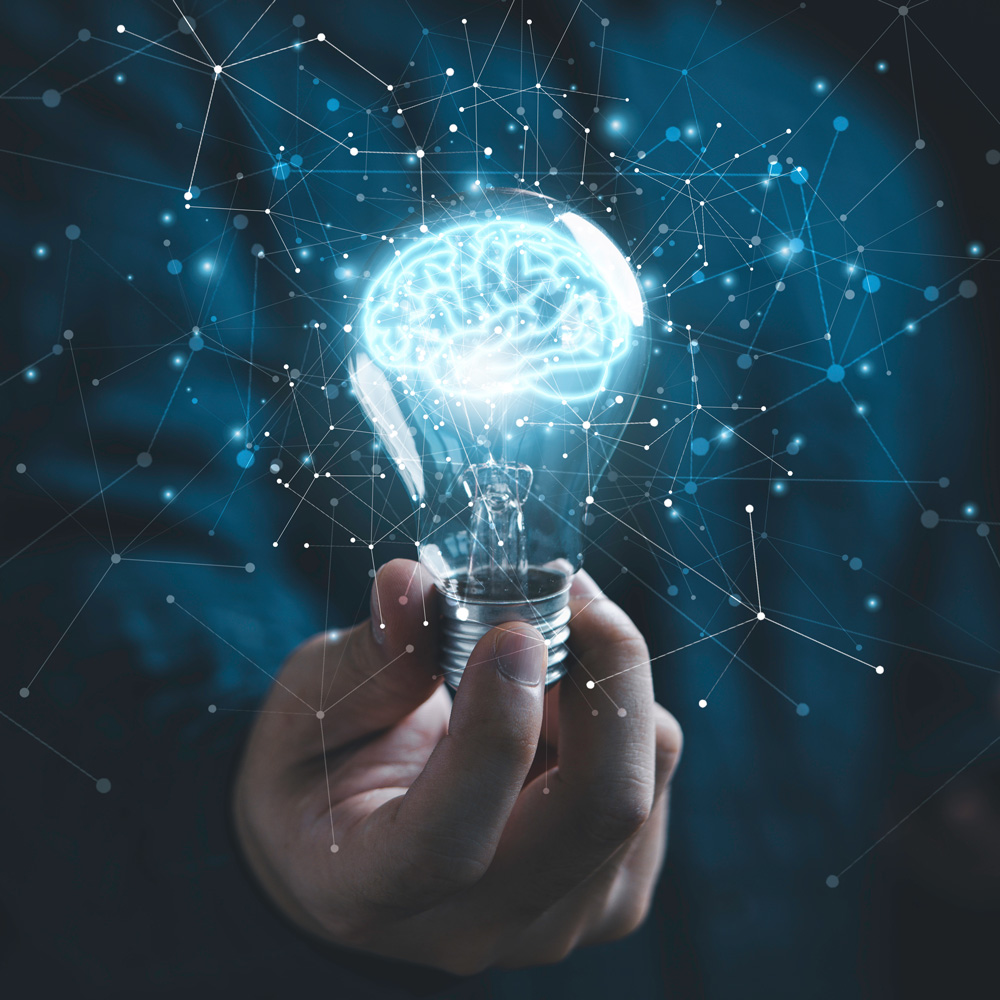A Challenge to Bernstein's Degrees-of-Freedom Problem in Both Cases of Human and Robotic Multi-Joint Movements
Summary :
This paper aims at challenging Bernstein's problem called the "Degrees-of-Freedom problem," which remains unsolved from both the physiological and robotics viewpoints. More than a half century ago A.N. Bernstein observed that "dexterity" residing in human limb motion emerges from accumulated involvement of multi-joint movements in surplus DOF. It is also said in robotics that redundancy of DOFs in robot mechanisms may contribute to enhancement of dexterity and versatility. However, kinematic redundancy incurs a problem of ill-posedness of inverse kinematics from task-description space to joint space. In the history of robotics research such ill-posedness problem of inverse-kinematics has not yet been attacked directly but circumvented by introducing an artificial performance index and determining uniquely an inverse kinematics solution by minimizing it. Instead of it, this paper introduces two novel concepts named "stability on a manifold" and "transferability to a submanifold" in treating the case of human multi-joint movements of reaching and shows that a sensory feedback from task space to joint space together with a set of adequate dampings enables any solution to the overall closed-loop dynamics to converge naturally and coordinately to a lower-dimensional manifold describing a set of joint states fulfilling a given motion task. This means that, without considering any type of inverse kinematics, the reaching task can be accomplished by a sensory feedback with adequate choice of a stiffness parameter and damping coefficients. It is also shown that these novel concepts can cope with annoying characteristics called "variability" of redundant joint motions seen typically in human skilled reaching. Finally, it is pointed out that the proposed control signals can be generated in a feedforward manner in case of human limb movements by referring to mechano-chemical characteristics of activation of muscles. Based on this observation, generation of human skilled movements of reaching can be interpreted in terms of the proposed "Virtual-Spring" hypothesis instead of the traditional "Equilibrium-Point" hypothesis.
- Publication
- IEICE TRANSACTIONS on Fundamentals Vol.E88-A No.10 pp.2484-2495
- Publication Date
- 2005/10/01
- Publicized
- Online ISSN
- DOI
- 10.1093/ietfec/e88-a.10.2484
- Type of Manuscript
- Special Section INVITED PAPER (Special Section on Nonlinear Theory and its Applications)
- Category
Authors
Keyword
Latest Issue
Copyrights notice of machine-translated contents
The copyright of the original papers published on this site belongs to IEICE. Unauthorized use of the original or translated papers is prohibited. See IEICE Provisions on Copyright for details.
Cite this
Copy
Suguru ARIMOTO, Masahiro SEKIMOTO, Ryuta OZAWA, "A Challenge to Bernstein's Degrees-of-Freedom Problem in Both Cases of Human and Robotic Multi-Joint Movements" in IEICE TRANSACTIONS on Fundamentals,
vol. E88-A, no. 10, pp. 2484-2495, October 2005, doi: 10.1093/ietfec/e88-a.10.2484.
Abstract: This paper aims at challenging Bernstein's problem called the "Degrees-of-Freedom problem," which remains unsolved from both the physiological and robotics viewpoints. More than a half century ago A.N. Bernstein observed that "dexterity" residing in human limb motion emerges from accumulated involvement of multi-joint movements in surplus DOF. It is also said in robotics that redundancy of DOFs in robot mechanisms may contribute to enhancement of dexterity and versatility. However, kinematic redundancy incurs a problem of ill-posedness of inverse kinematics from task-description space to joint space. In the history of robotics research such ill-posedness problem of inverse-kinematics has not yet been attacked directly but circumvented by introducing an artificial performance index and determining uniquely an inverse kinematics solution by minimizing it. Instead of it, this paper introduces two novel concepts named "stability on a manifold" and "transferability to a submanifold" in treating the case of human multi-joint movements of reaching and shows that a sensory feedback from task space to joint space together with a set of adequate dampings enables any solution to the overall closed-loop dynamics to converge naturally and coordinately to a lower-dimensional manifold describing a set of joint states fulfilling a given motion task. This means that, without considering any type of inverse kinematics, the reaching task can be accomplished by a sensory feedback with adequate choice of a stiffness parameter and damping coefficients. It is also shown that these novel concepts can cope with annoying characteristics called "variability" of redundant joint motions seen typically in human skilled reaching. Finally, it is pointed out that the proposed control signals can be generated in a feedforward manner in case of human limb movements by referring to mechano-chemical characteristics of activation of muscles. Based on this observation, generation of human skilled movements of reaching can be interpreted in terms of the proposed "Virtual-Spring" hypothesis instead of the traditional "Equilibrium-Point" hypothesis.
URL: https://globals.ieice.org/en_transactions/fundamentals/10.1093/ietfec/e88-a.10.2484/_p
Copy
@ARTICLE{e88-a_10_2484,
author={Suguru ARIMOTO, Masahiro SEKIMOTO, Ryuta OZAWA, },
journal={IEICE TRANSACTIONS on Fundamentals},
title={A Challenge to Bernstein's Degrees-of-Freedom Problem in Both Cases of Human and Robotic Multi-Joint Movements},
year={2005},
volume={E88-A},
number={10},
pages={2484-2495},
abstract={This paper aims at challenging Bernstein's problem called the "Degrees-of-Freedom problem," which remains unsolved from both the physiological and robotics viewpoints. More than a half century ago A.N. Bernstein observed that "dexterity" residing in human limb motion emerges from accumulated involvement of multi-joint movements in surplus DOF. It is also said in robotics that redundancy of DOFs in robot mechanisms may contribute to enhancement of dexterity and versatility. However, kinematic redundancy incurs a problem of ill-posedness of inverse kinematics from task-description space to joint space. In the history of robotics research such ill-posedness problem of inverse-kinematics has not yet been attacked directly but circumvented by introducing an artificial performance index and determining uniquely an inverse kinematics solution by minimizing it. Instead of it, this paper introduces two novel concepts named "stability on a manifold" and "transferability to a submanifold" in treating the case of human multi-joint movements of reaching and shows that a sensory feedback from task space to joint space together with a set of adequate dampings enables any solution to the overall closed-loop dynamics to converge naturally and coordinately to a lower-dimensional manifold describing a set of joint states fulfilling a given motion task. This means that, without considering any type of inverse kinematics, the reaching task can be accomplished by a sensory feedback with adequate choice of a stiffness parameter and damping coefficients. It is also shown that these novel concepts can cope with annoying characteristics called "variability" of redundant joint motions seen typically in human skilled reaching. Finally, it is pointed out that the proposed control signals can be generated in a feedforward manner in case of human limb movements by referring to mechano-chemical characteristics of activation of muscles. Based on this observation, generation of human skilled movements of reaching can be interpreted in terms of the proposed "Virtual-Spring" hypothesis instead of the traditional "Equilibrium-Point" hypothesis.},
keywords={},
doi={10.1093/ietfec/e88-a.10.2484},
ISSN={},
month={October},}
Copy
TY - JOUR
TI - A Challenge to Bernstein's Degrees-of-Freedom Problem in Both Cases of Human and Robotic Multi-Joint Movements
T2 - IEICE TRANSACTIONS on Fundamentals
SP - 2484
EP - 2495
AU - Suguru ARIMOTO
AU - Masahiro SEKIMOTO
AU - Ryuta OZAWA
PY - 2005
DO - 10.1093/ietfec/e88-a.10.2484
JO - IEICE TRANSACTIONS on Fundamentals
SN -
VL - E88-A
IS - 10
JA - IEICE TRANSACTIONS on Fundamentals
Y1 - October 2005
AB - This paper aims at challenging Bernstein's problem called the "Degrees-of-Freedom problem," which remains unsolved from both the physiological and robotics viewpoints. More than a half century ago A.N. Bernstein observed that "dexterity" residing in human limb motion emerges from accumulated involvement of multi-joint movements in surplus DOF. It is also said in robotics that redundancy of DOFs in robot mechanisms may contribute to enhancement of dexterity and versatility. However, kinematic redundancy incurs a problem of ill-posedness of inverse kinematics from task-description space to joint space. In the history of robotics research such ill-posedness problem of inverse-kinematics has not yet been attacked directly but circumvented by introducing an artificial performance index and determining uniquely an inverse kinematics solution by minimizing it. Instead of it, this paper introduces two novel concepts named "stability on a manifold" and "transferability to a submanifold" in treating the case of human multi-joint movements of reaching and shows that a sensory feedback from task space to joint space together with a set of adequate dampings enables any solution to the overall closed-loop dynamics to converge naturally and coordinately to a lower-dimensional manifold describing a set of joint states fulfilling a given motion task. This means that, without considering any type of inverse kinematics, the reaching task can be accomplished by a sensory feedback with adequate choice of a stiffness parameter and damping coefficients. It is also shown that these novel concepts can cope with annoying characteristics called "variability" of redundant joint motions seen typically in human skilled reaching. Finally, it is pointed out that the proposed control signals can be generated in a feedforward manner in case of human limb movements by referring to mechano-chemical characteristics of activation of muscles. Based on this observation, generation of human skilled movements of reaching can be interpreted in terms of the proposed "Virtual-Spring" hypothesis instead of the traditional "Equilibrium-Point" hypothesis.
ER -




















